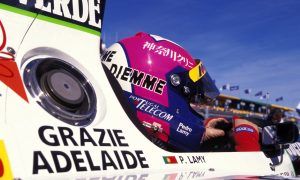ALL IN THE BOX
Unlike Renault and Mercedes (at least if we base ourselves on the official pictures released), Honda uses a single unit to fit the battery as well as the control electronic boxes of both MGUs. This casing is positioned behind the driver’s seat and below the tank and one can spot Thermax labels – whose colour change depending on the temperature – and FIA stickers on it.
While this compact design frees up space beneath the oil tank and helps have a tighter overall package, it also makes cooling quite tricky.
Honda has failed to exploit the theoretical advantages of its RA165H’s Mercedes-like architecture.
Honda had the ambition to catch up with their rivals by using ground-breaking technologies, but these have proved to be technically immature. There lies the main reason why the RA165H has failed to exploit the theoretical advantages of its Mercedes-like architecture. The split-turbo installation should have improved cooling and the log manifold limited turbo lag, i.e. the amount of energy recovered by the energy recovery systems (ERS) and subsequently used by the MGU-H to keep the turbine spinning when the throttle pedal is not pressed.
Beyond the overall power unit design, the difference lies more in how well it is implemented. And no matter how deep under the skin of the engines you can travel with exclusive images, this factor remains invisible.
Click here to see the first chapter in our series of exclusive power unit pictures
Click here for the F1 drivers' girlfriends gallery
Keep up to date with all the F1 news via Facebook and Twitter








